#Hvac fan coil
Text

42CE FCU is a new and improved technology by Carrier, developed to be ultra-tranquil and deliver high efficiency in a compact configuration.
0 notes
Text
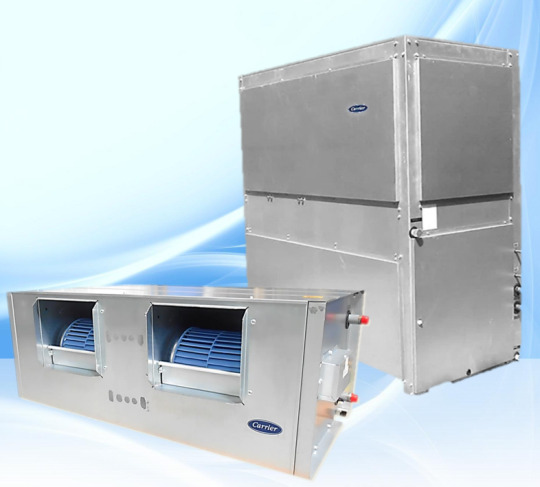
Carrier’s 40LM series fan coil units are Factory assembled, horizontal draw through type fan coil for furred-in ducted installations. Units shall be completed with water coil(s), fan(s), motor(s), drain pan, filters and all required wiring, collars for ducted units.
The low silhouette styling of this unit makes it a popular choice for “in-the-ceiling” or “over the closet” applications in all types of building installation like residential, hotels, motels, apartments, offices, hospitals, schools and other multi-room buildings
#air quality#hvac#air conditioning#commercial ac#indoor air quality#healthy buildings programs#fan coil units
0 notes
Text
#Air Conditioner Manufacturers In UAE#Condensing Unit#HVAC Equipment Manufacturers#HVAC Manufacturers In UAE#HVAC Suppliers In Dubai#Fan Coil Unit Manufacturers
0 notes
Text
HVAC & AC Spare Parts Supplier in dubai
Enhance your AC performance with ANBI Solutions, your premier HVAC & AC spare parts supplier in Dubai. Whether you're upgrading your system or in need of specific spare parts, ANBI offers a comprehensive selection from all major brands at competitive prices. Trust us for quality and affordability in every HVAC solution
#hvac & ac spare parts supplier in africa#hvac ducting material dubai#supplier in gcc for ac and hvac spare parts#ac fan motor price in dubai#Supplier in GCC for AC and HVAC Spare Parts#Rubber Insulation Materials & Copper Coils#air conditioner spare parts#ac compressor motor#aircon spare parts#HVAC Rubber Insulation Materials & Copper Coils Maksal South Africa
0 notes
Text
#HVAC#home cooling#AC expert#cooling technology#energy-saving hacks#maintenance tips#eco-friendly refrigerants#efficient AC system#evaporator coils#ceiling fan rotation#refrigerant leaks#outdoor AC unit placement#summer heat#sustainability#energy conservation
0 notes
Text
Enhance Efficiency and Visibility with Commercial Walk-In Cooler Glass Doors
Advantages of Commercial Walk-In Cooler Glass Doors
Commercial Walk-In Cooler Glass doors are a popular choice for businesses that require both refrigeration and product visibility. These coolers feature glass doors that provide a clear view of the items stored inside. The glass doors are designed with insulated glass panels to maintain temperature control while allowing customers and employees to see the products without opening the door. Commercial Walk-In Cooler Glass doors offer several benefits, including enhanced product display, easy access to items, and energy efficiency.
Benefits of Commercial Walk-In Cooler Glass Door
Commercial walk-in cooler glass door offer several benefits for businesses in various industries. Here are some key advantages:
1. Enhanced Product Visibility: Commercial walk-in coolers with glass doors provide excellent product visibility, allowing customers to see the items stored inside. This enhances the presentation and attractiveness of perishable goods, enticing customers and potentially increasing sales.
2. Temperature Control: Glass doors on walk-in coolers are designed with insulated glasspanels, ensuring effective temperature control within the storage space. This helps maintain the freshness and quality of perishable items while providing a clear view of the products without compromising the internal temperature.
3. Energy Efficiency: Glass doors on walk-in coolers are designed to be energy efficient. The insulated glass panels help prevent heat transfer, reducing the workload on the refrigeration system and minimizing energy consumption. This can lead to cost savings on energy bills over time.
4. Easy Product Access: The glass doors allow employees to quickly and easily locate and access the items stored inside the walk-in cooler. This improves operational efficiency, as employees can retrieve products without having to open the door, minimizing temperature fluctuations and saving time.
5. Stylish Showcase Solution: Commercial walk-in coolers with glass doors create an attractive showcase for perishable goods. The transparent doors allow for a visually appealing display, making it easier for customers to browse and select products. This can enhance the overall shopping experience and contribute to a positive brand image.
We Supply Efficient and Reliable Commercial Walk-In Cooler Glass Door
Vinny's Air Commercial Cooling Inc specializes in supplying efficient and reliable commercial walk-in coolers glass doors. We understand the importance of visibility and temperature control for businesses like restaurants and grocery stores. Our walk-in coolers are built with high-quality materials and insulated glass panels to ensure durability and optimal performance. Whether you need a single glass door or multiple glass doors, we can customize the coolers to fit your specific needs. Our goal is to provide energy-efficient solutions that not only meet your storage requirements but also enhance the display of your products. Choose Vinny's Air Commercial Cooling Inc for your commercial walk-in cooler glass door needs, and you can trust in our efficiency and reliability.
Content Source
#commercial glass#fan coil supplier#fan coil units#glass door#fan coil#hvac systems#glass doors#fancoil#commercial glass doors#walk in closet
1 note
·
View note
Text
Your Perfect Aircon Maintenance For The Year 2024
In Singapore's tropical climate, aircon maintenance is essential to the durability, energy efficiency, and peak performance of your cooling equipment. Here are some vital upkeep pointers:
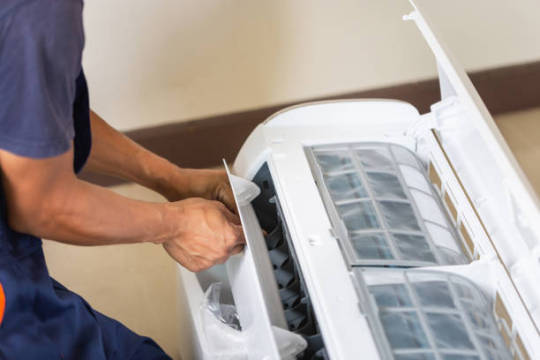
Continual Cleaning: To maintain enough circulation and avoid dust accumulation, which can lower performance and air quality, clean or replace air filters every one to two months.
Maintenance of Outdoor Units: Maintain the outside unit tidy and clear of dirt, leaves, and branches. To allow for enough airflow, make sure there is at least two feet of space surrounding the unit.
Verify the refrigerant levels. A leak or other problems may be indicated by insufficient refrigerant. If necessary, have a qualified technician check and replenish the refrigerant levels.
Examine and Clean Coils: Dirt and debris buildup on evaporator and condenser coils over time can lower efficiency. Make an appointment for routine cleaning by a qualified technician.

Examine and Clear the Condensate Drain: A clogged condensate drain can lower interior humidity levels and result in water damage. To avoid clogs, regularly check and clean the drain line.
Examine Fan Blades: Look for any damage or obstructions on the fan blades. Damaged or bent blades can reduce efficiency and airflow.
Plan Professional Maintenance: You should think about making an appointment with a licenced HVAC professional for yearly maintenance. They are able to provide comprehensive tune-ups and inspections and spot possible problems before they become serious.
Make Use of an Adjustable Thermostat: When the aircon is not needed, use a programmable thermostat to effectively control the temperature and save electricity.
Monitor Performance: Keep an eye out for any strange smells, sounds, or variations in the cooling system's functionality. Make quick work of any problems by getting in touch with a qualified specialist aircon system.
You can guarantee that your runs effectively and dependably, offering comfort all year long, according to these maintenance recommendations.
2 notes
·
View notes
Text
What You Need to Know About Ductless Mini-Split Systems?

What Is A Ductless Mini-Split System?
A mini-split HVAC system is one that is split into two parts. It has an outdoor compressor and indoor evaporators (there can be four to as many as eight units designed to cool individual zones). No ductwork is used to distribute air, as there is in a central A/C system. This configuration allows the temperature in individual rooms to be set to your liking.
How Does It Work?
An outdoor compressor pumps pressurized refrigerant through small tubes that are connected to indoor units. These tubes require just a three-inch-wide hole for a small conduit that links the different components. Each indoor evaporator, which serves an individual room, circulates the refrigerant to extract heat from the interior space. The in-room units do the cooling rather than a centralized system from which air is transported through supply and return ducts. Once the refrigerant returns to the outdoor unit, the heat collected from interior air is released into the environment. In addition, some systems integrate a heat pump that extracts heat from outside air and transfers it to the interior to warm your indoor space.
Parts of a Ductless Mini-Split A/C System
There are four main components that make up a ductless system. These include the:
- Condensing unit: In a mini-split system, the condenser is placed outside the home or building and includes condenser coils, which are designed to pump cooled/heated refrigerant through specialized tubes. A fan pulls air through the coil to safely dissipate heat energy into the surrounding environment.
- Refrigerant lines: These line sets are usually passed through a small three-inch hole in the wall (this avoids extensive drilling). In rare setups, they are run through a window. Refrigerant lines link the outdoor unit to one or more indoor units in the system.
- Indoor unit: Releases cold air into the room or space it serves. Although there are many types of indoor units available on the market, the commonality is all are designed to cool or heat a single zone.
Types of Mini Splits
The different types of indoor units can accommodate specific requirements. They all serve the same function but, depending on their configuration, can fit limited space or a particular interior design theme.
Wall-Mounted: The most popular and least expensive indoor unit, a wall-mounted system is available in many types. They can range from 6,000 to 36,000 British Thermal Units (BTUs) and in sizes from 30 to 44 inches wide, 12 to 14 inches tall, and 6 to 10 inches deep. They are best suited for rooms with at least 7- or 8-foot-high walls (and best placed at a height of about 6 feet). The unit must be placed against a level exterior wall, where a 3-inch hole can be drilled to draw the refrigerant lines, drain tube, and electrical wiring.
Ceiling Cassette: An unobtrusive unit installed behind a decorative cassette grill that sits flush with the ceiling, creating a seamless look. No mechanical components are visible. Ceiling recessed cassettes can range up to 48,000 BTU and have four vents, so are best placed in the center of the room. Often installed in commercial settings, they can be installed in a drop ceiling or traditional joust ceiling if there’s enough space (10 to 14 inches of clearance is required). A built-in thermostat adjusts output based on indoor temperature readings.
Concealed Duct: A hybrid unit that uses ductwork to deliver conditioned air through a dropped ceiling, attic, closet, or crawlspace. The ducts can be branched to supply two rooms, where the temperature is controlled by a single thermostat. It’s important to consider the power specifications of the blower when determining the length of the duct run; a stronger blower will be needed for longer runs.
Floor-Mounted: Is typically installed where the wall and floorboards meet to produce a more noticeable effect of cooled or warmed air. A floor-mounted unit is usually more visible, but low ceilings or high windows do not impede installation. It is suited for an attic bedroom where ceiling slant prohibits the use of a wall or ceiling unit. The indoor unit must not be more than 6 inches above the floor on an exterior wall.
#mini split heat pump#ductless heat pump#ductless mini split heat pump#split heat pump#ductless air conditioner#ductless ac
2 notes
·
View notes
Text
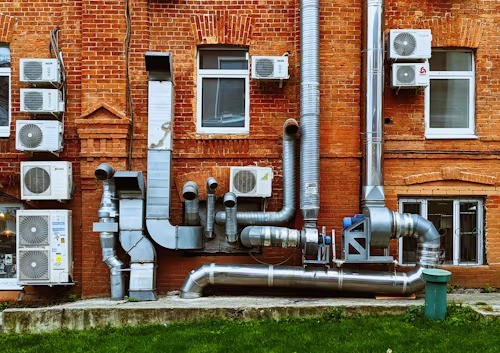
The Benefits of Professional Air Duct Cleaning vs. DIY Methods
Maintaining clean air ducts is essential for ensuring good indoor air quality and optimal HVAC system performance. Homeowners often face the dilemma of choosing between professional air duct cleaning services and attempting the task themselves. This article explores the benefits of professional air duct cleaning compared to DIY methods, helping you make an informed decision.
Why Clean Air Ducts Matter
Air ducts play a crucial role in distributing conditioned air throughout your home. Over time, they can accumulate dust, allergens, mold, and other debris, which can negatively impact indoor air quality and HVAC efficiency. Regular cleaning of air ducts is vital to:
Improve air quality
Enhance energy efficiency
Extend the lifespan of HVAC systems
Reduce allergens and respiratory issues
Professional Air Duct Cleaning: Comprehensive and Efficient
Expertise and Experience
Professional air duct cleaners have the knowledge and experience to handle various types of HVAC systems. They understand the intricacies of air duct design and can identify potential issues that an untrained eye might miss. Their expertise ensures a thorough cleaning process, addressing all parts of the system.
Advanced Equipment
Professionals use specialized equipment designed for air duct cleaning, such as high-powered vacuums, rotary brushes, and air whips. These tools can reach deep into the ductwork, removing debris more effectively than household tools. Advanced equipment also helps in dislodging and capturing contaminants without damaging the ducts.
Comprehensive Cleaning
A professional service includes cleaning all components of the HVAC system, including registers, grilles, fans, and coils. This holistic approach ensures that every part of the system is free from dust and debris, leading to better overall performance. DIY methods often fall short of this level of thoroughness, potentially leaving parts of the system dirty.
Time and Convenience
Cleaning air ducts is a time-consuming task, especially for those without experience. Hiring professionals saves you time and effort, allowing you to focus on other important tasks. Additionally, professionals work efficiently, minimizing disruption to your daily routine.
DIY Air Duct Cleaning: A Cost-Effective Option with Limitations
Cost Savings
One of the primary reasons homeowners consider DIY air duct cleaning is to save money. Professional services can be expensive, and DIY methods seem like a cost-effective alternative. However, the savings might be offset by the potential for incomplete cleaning and the risk of damaging the ductwork.
Limited Effectiveness
DIY air duct cleaning typically involves using household tools like vacuum cleaners and brushes. While these can remove some surface dust, they are often insufficient for deep cleaning. Without specialized equipment, it's challenging to reach the inner parts of the ducts, leading to an incomplete cleaning job.
Risk of Damage
Improper cleaning techniques can damage your air ducts, leading to costly repairs. For example, using a vacuum cleaner without proper attachments can create tears or punctures in the ducts. Professionals are trained to handle the ductwork delicately, avoiding such risks.
Health and Safety Concerns
Cleaning air ducts involves handling dust, mold, and other allergens, which can pose health risks. Without proper protective gear and ventilation, you might expose yourself to these contaminants. Professionals use safety measures to protect themselves and your home during the cleaning process.
Making the Right Choice
When deciding between professional air duct cleaning and DIY methods, consider the following factors:
The Condition of Your Ducts
If your ducts have not been cleaned for several years or you suspect mold growth, it's best to hire professionals. They can handle severe contamination and ensure a thorough cleaning.
Your Budget
While DIY methods are cheaper, they may not provide the same level of cleanliness as professional services. Weigh the cost savings against the potential benefits of a cleaner and more efficient HVAC system.
Your Time and Skills
Consider whether you have the time and skills to perform a comprehensive cleaning. If you're unsure about your ability to do the job correctly, it's safer to hire professionals.
Conclusion
Both professional air duct cleaning and DIY methods have their pros and cons. Professional cleaning offers thoroughness, efficiency, and peace of mind, making it a worthwhile investment for maintaining your home's air quality and HVAC performance. DIY cleaning can save money but may fall short in effectiveness and safety. By evaluating your specific needs and circumstances, you can make an informed decision that best suits your home and budget.
0 notes
Text
Chilled Water Systems: The Cool Backbone of Modern Infrastructure

Introduction
What Are Chilled Water Systems?
Chilled water systems are essential components in the heating, ventilation, and air conditioning (HVAC) industry. They provide a reliable method to cool large buildings and industrial processes by circulating chilled water throughout the system, effectively removing heat from the space.
Importance in Modern Infrastructure
In today's world, where energy efficiency and environmental impact are crucial considerations, chilled water systems play a vital role. They are used in various settings, from commercial buildings to industrial facilities, ensuring comfortable and safe environments while minimizing energy consumption.
How Chilled Water Systems Work
Basic Components
A typical chilled water system consists of chillers, cooling towers, pumps, and a network of pipes. The chiller is the core component, responsible for removing heat from the water, which is then circulated through the building or process.
The Cooling Cycle
The cooling cycle begins with the chiller, where refrigerant absorbs heat from the water. This chilled water is then distributed through the building via a network of pipes. As it flows through air handlers and fan coil units, it absorbs heat from the air, effectively cooling the space. The now-warmed water returns to the chiller to begin the cycle again.
Types of Chilled Water Systems
Air-Cooled Chillers
Air-cooled chillers use air to dissipate heat from the refrigerant. They are typically used in smaller installations or where water availability is limited. These systems are easier to install and maintain but can be less efficient in extreme temperatures.
Water-Cooled Chillers
Water-cooled chillers use water from a cooling tower to remove heat from the refrigerant. These systems are more efficient and suitable for larger installations but require more space and higher maintenance.
Applications of Chilled Water Systems
Commercial Buildings
In commercial buildings, chilled water systems are crucial for maintaining comfortable indoor temperatures. They are commonly used in office buildings, malls, and hotels.
Industrial Uses
Industries such as manufacturing, pharmaceuticals, and food processing rely on chilled water systems to maintain process temperatures and ensure product quality.
Data Centers
Data centers, which generate significant amounts of heat, use chilled water systems to keep servers cool and operational, preventing overheating and downtime.
Hospitals
Hospitals utilize chilled water systems to ensure a comfortable environment for patients and staff, as well as to maintain the proper functioning of medical equipment.
Benefits of Chilled Water Systems
Energy Efficiency
Chilled water systems are known for their energy efficiency, particularly water-cooled systems, which can significantly reduce energy consumption compared to traditional air conditioning systems.
Cost Savings
By reducing energy consumption, chilled water systems can lead to substantial cost savings over time. Additionally, their longer lifespan and lower maintenance costs contribute to overall savings.
Environmental Impact
These systems have a lower environmental impact due to their efficient use of energy and the ability to use eco-friendly refrigerants, reducing greenhouse gas emissions.
Challenges and Considerations
Installation Costs
While chilled water systems offer many benefits, the initial installation costs can be high, especially for water-cooled systems, which require extensive infrastructure.
Maintenance Requirements
Regular maintenance is crucial to ensure the efficiency and longevity of chilled water systems. This includes checking refrigerant levels, inspecting pumps and pipes, and ensuring the cooling tower is functioning correctly.
Space Considerations
Water-cooled systems require significant space for cooling towers and associated equipment, which can be a limitation in urban areas or buildings with limited space.
Choosing the Right Chilled Water System
Assessing Needs
Choosing the right system involves assessing the cooling needs of the building or process, including the required capacity and efficiency.
Budget Considerations
Budget plays a crucial role in the decision-making process. While water-cooled systems are more efficient, they come with higher upfront costs compared to air-cooled systems.
Long-Term Planning
Considering the long-term benefits, including energy savings and maintenance costs, is essential when choosing a chilled water system. Investing in a more efficient system upfront can lead to significant savings over time.
Advancements in Chilled Water Systems
Smart Technology Integration
Modern chilled water systems are incorporating smart technology, allowing for real-time monitoring and adjustments, which enhances efficiency and reliability.
Eco-Friendly Refrigerants
The use of eco-friendly refrigerants is becoming more common, reducing the environmental impact of chilled water systems and complying with stricter environmental regulations.
Improved Efficiency Designs
Advancements in design, such as variable speed drives and improved heat exchangers, are increasing the efficiency of chilled water systems, making them more effective and economical.
Case Studies
Successful Implementations
Numerous case studies highlight the successful implementation of chilled water systems in various settings, showcasing their benefits and efficiency.
Lessons Learned
These case studies also provide valuable lessons on the challenges faced during installation and operation, offering insights for future projects.
Future of Chilled Water Systems
Emerging Trends
The future of chilled water systems is bright, with trends such as increased automation, smarter controls, and more sustainable practices leading the way.
Sustainability Initiatives
Sustainability is a key focus, with efforts to reduce energy consumption and environmental impact driving innovation in the field of chilled water systems.
Conclusion
Recap of Key Points
Chilled water systems are essential for modern infrastructure, offering efficient and reliable cooling for various applications. Their benefits, including energy efficiency, cost savings, and environmental impact, make them a preferred choice in many settings.
Final Thoughts
Fabtech is technology advances and sustainability becomes a priority, chilled water systems will continue to evolve, providing even greater benefits and efficiencies. Investing in the right system today can lead to significant long-term gains.
FAQs
What is a chilled water system?
A chilled water system is an HVAC solution that uses chilled water to cool buildings or industrial processes by circulating the water through a network of pipes and heat exchangers.
How do chilled water systems save energy?
Chilled water systems save energy by efficiently removing heat from spaces using chilled water, which requires less energy than traditional air conditioning systems.
What are the main types of chilled water systems?
The main types are air-cooled chillers, which use air to dissipate heat, and water-cooled chillers, which use water from a cooling tower.
#bio pharma solutions#dedusting machine#chilled water systems#Tablet Coating Machine#Fabtech pharmaceutical
0 notes
Text
Enhance HVAC Control with the Honeywell Universal Fan Coil Thermostat
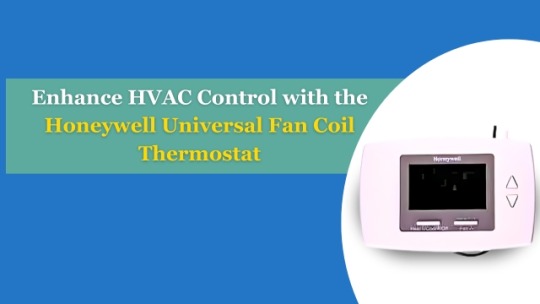
The thermostat is an essential component of heating, ventilation, and air conditioning (HVAC) systems. It's the conductor, arranging a symphony of comfort inside our surroundings. The Honeywell Universal Fan Coil Thermostat is a highlight in this outfit. Let's look at how this device can fine-tune your HVAC system for peak performance.
Understanding Universal Fan Coil Systems:
The Fan Universal coil systems are essential components of heating, ventilation, and air conditioning (HVAC) systems, controlling indoor temperature and airflow. These systems are widely used in both residential and commercial buildings because to their adaptability and efficiency.
Role in HVAC Setups:
The Universal Fan coil systems are the heart of HVAC systems, moving warm or cooled air throughout the structure. They function by sending air over a heat exchanger, which heats or cools the air based on the desired temperature. This conditioned air is subsequently distributed throughout the living or working areas, giving inhabitants a comfortable environment.
Fan coil systems are especially useful in buildings with a wide range of heating and cooling requirements because they enable accurate temperature control across many zones. Because of their versatility, they are ideal for use in hotels, business buildings, condominiums, and single-family houses.
Components of a Fan Coil System:
Fan Coil Unit: A fan coil system is built around the fan coil unit (FCU). This machine has a fan, a heating or cooling coil, and controls for adjusting airflow and temperature.
Thermostat: The thermostat is the fan coil system's control centre, allowing users to select the desired temperature and fan speed.
Piping and Ductwork: Fan coil systems use a network of piping and ductwork to transport conditioned air throughout the structure. These conduits carry hot or cold water to the fan coil units, which use it to modify the temperature of the air before it is released into space.
Controls and Sensors: In addition to the thermostat, fan coil systems may include a variety of controls and sensors for monitoring and regulating temperature, humidity, and air quality.
Air Filters: Air filters are another key component of fan coil systems, as they remove dust, pollen, and other airborne contaminants from the circulating air.
Features of the Honeywell Universal Fan Coil Thermostat:
The Honeywell Universal Fan Coil Thermostat is a functional powerhouse, with a variety of features designed to optimise HVAC performance and improve the user experience.
Versatility and Compatibility: One of the Honeywell Universal Fan Coil Thermostat's distinguishing advantages is its compatibility with a variety of fan coil systems. Whether you have a traditional fan coil unit or a more modern layout, this thermostat will work effortlessly with your HVAC system.
Precise Temperature Control: The thermostat's powerful temperature management features keep your room at the optimal temperature for comfort and efficiency.
Energy Efficiency: In today's environmentally conscious world, energy efficiency is essential. The Honeywell Universal Fan Coil Thermostat reduces energy usage by intelligently managing fan speeds.
Customizable Settings: The Honeywell Universal Fan Coil Thermostat allows for extensive customization. Users can fine-tune settings to meet their unique preferences and needs. Whether you're tweaking fan speeds or setting temperature limits.
User-Friendly Interface: Despite its complex functionality, the thermostat has a user-friendly interface that makes operation simple. Users may simply access settings and make modifications as needed thanks to intuitive controls and a clear display, which require no specific training or technical knowledge.
Benefits of Using the Honeywell Universal Fan Coil Thermostat:
The Honeywell Universal Fan Coil Thermostat emphasises energy saving. It optimises airflow by giving exact control over fan speeds, lowering energy usage while maintaining comfort. Individual tastes can be met with customizable fan speed settings, ensuring that everyone finds the ideal temperature. Furthermore, its adaptability and versatility make it an excellent addition to a wide range of HVAC applications, from residential to commercial.
The Honeywell Universal Fan Coil Thermostat stands out as an example of efficiency and comfort. Its extensive features and user-friendly design make it an excellent addition to any HVAC system. As we strive for greener, more sustainable buildings, investing in energy-efficient solutions like this thermostat is not only a wise decision; it is a step toward a brighter, more comfortable future.
0 notes
Text
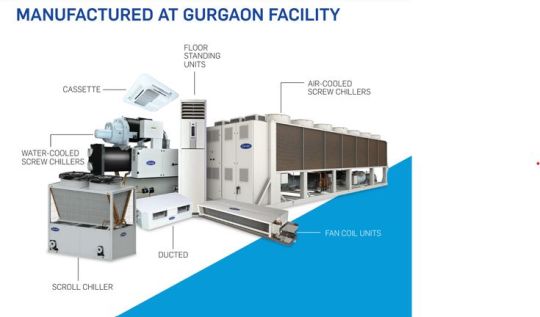
Explore Carrier's range of commercial equipment, applied solutions, variable refrigerant flow (VRF) systems and aftermarket offerings to find the perfect cooling solution tailored to your unique requirements.
#hvac company#inverter air conditioner#hvac#chillers#commercial chillers#ahu#fan coil#indoor air quality#ducted ac#air conditioning
0 notes
Text

Carrier is at the forefront of revolutionizing comfort solutions for a diverse range of commercial and light commercial applications across Asia. With our expertise, we ensure that people across the continent experience comfort and convenience in various settings, including commercial areas, cultural institutions, educational organizations, luxurious hotels, airports, subways, expansive factories, towering office buildings, vibrant amusement parks, historical display centers, and residential spaces like apartments, villas, and chain supermarkets. Our innovative solutions cater to the unique needs of each environment, enhancing the quality of life and productivity for millions across Asia.
#air conditioning#chiller#commercial ac#indoor air quality#air quality#hvac#fan coil units#air cooled#healthy buildings programs#commercial chillers
0 notes
Text
Certified Air Conditioning Equipment by Trosten
Trosten Industries specializes in manufacturing central air conditioning and kitchen ventilation equipment. The air conditioning unit and equipment that it manufactures is useful for residential, commercial, industrial and hygiene applications.
Features of the HVAC equipment provided by Trosten:
Below is the HVAC equipment range offered by Trosten Industries:
The latest technology used for manufacturing all HVAC products makes all the products ideal for commercial complexes like shopping malls, office complexes, medical facilities, clean rooms etc.
Trosten assures of high product and service quality and it continues to maintain its market hold in HVAC industry in the UAE.
0 notes
Text
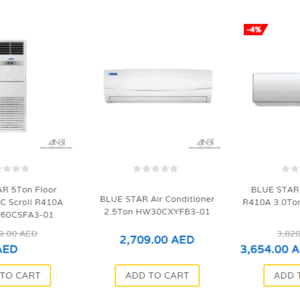
ANBI Solution: Your Leading HVAC & AC Spare Parts Supplier in Fujairah! Providing comprehensive air conditioning solutions for both domestic and industrial business needs. Explore our store with a wide range of top-notch brand spare parts. Enjoy a 20% discount on selected products and benefit from free delivery across the UAE. Elevate your cooling experience with ANBI Solution!
#hvac ducting material dubai#samsung air conditioner spare parts#Refrigerant Gases UAE#ac fan motor price in dubai#Supplier in GCC for AC and HVAC Spare Parts#Supplier in Dubai for AC and HVAC Spare Parts#Rubber Insulation Materials & Copper Coils#Refrigerant Gases#air conditioner spare parts#ac spare parts#ac compressor motor#ac parts price#hitachi ac parts
0 notes
Text
Invigorating Breath: The Science of Expert Air Duct Cleaning
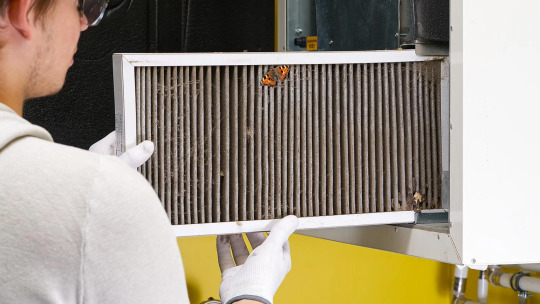
Cleaning our air ducts is an important but sometimes disregarded step in our search for clean and healthy indoor air. Even though they may not be visible, unclean air ducts can have a big effect on our health. To keep clean indoor air, professional air duct cleaning is crucial. Let's explore the science behind this.
The Value of Pure Air Ducts
It's important to keep your home's air ducts clean for a number of reasons:
Enhanced Indoor Air Quality:
When your HVAC system operates, dust, allergies, and even mold can grow inside your dirty air ducts and spread throughout your house. This may worsen respiratory conditions and result in poor indoor air quality.
Energy Efficiency:
When dust and debris build up in your air ducts, airflow can be restricted, making it difficult for your HVAC system to keep the temperature where it wants to be. This raises your energy costs in addition to decreasing energy efficiency.
The Scientific Basis of Expert Air Duct Cleaning
All parts of your HVAC system, including the supply and return air ducts, registers, grilles, diffusers, heat exchangers, cooling coils, drip pans, fan motors, and housing, must be thoroughly cleaned when hiring a professional air duct cleaner.
Examination: To evaluate the state of your HVAC system and pinpoint any areas that need maintenance, a thorough examination is the first step in the process.
Eliminating Pollutants: Skilled cleaners employ specialized instruments and apparatus to eliminate dust, debris, and other impurities from your HVAC system and air ducts.
Improved Airflow: Professional cleaning restores ideal airflow by removing obstructions from your air ducts, which enhances the effectiveness and operation of your HVAC system.
Prevention of Mold and Mildew: Expert cleaners also take care of mold and mildew development, stopping its spread and guaranteeing a better atmosphere for you and your family inside.
Maintaining clean indoor air quality and maximizing the efficiency of your HVAC system depend on keeping your home's air ducts clean. You and your family can benefit from better indoor air quality, energy savings, and a healthier home environment by being aware of the science behind professional air duct cleaning and making annual maintenance investments.
#air duct cleaning#professional air duct cleaning#air duct cleaning prices#air duct cleaning cost#air duct cleaning companies#air duct cleaning services
0 notes